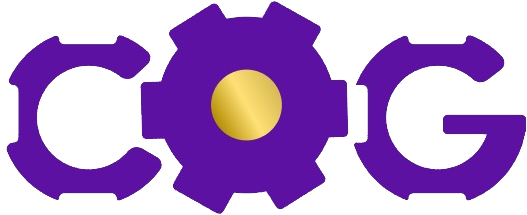Welcoming new hires into your company is an exciting yet crucial process, and perfecting it can make all the difference in employee satisfaction and retention. As we move towards 2025, the onboarding process should not only ensure a smooth transition but also be an opportunity to gather valuable feedback. By incorporating strategic survey questions, you can gain insights into the new hire experience and identify areas for improvement. Ready to revamp your onboarding? Let’s dive into the essential questions you need to ask!
Importance of Onboarding Surveys in 2025

With each passing year, the corporate landscape transforms, introducing new challenges and opportunities to the world of work. Onboarding surveys have thus become an indispensable tool to ensure new hires are not only fitting into their roles but thriving in them. Let’s dive deeper into why they hold so much significance, especially in 2025.
Adapting to Evolving Workplace Dynamics
In 2025, workplaces are more diverse and tech-driven than ever before. Companies are embracing remote work, hybrid models, and global teams more than in any previous era. This shift demands a fresh perspective on how we welcome and integrate new hires. Onboarding surveys allow organizations to keep their finger on the pulse concerning these changes and adapt their processes to the evolving expectations and experiences of new employees.
In today’s digital-first workspace, new employees are scattered across different locations and even time zones. This geographical distribution means they might not have the usual in-office orientation where they can ask a colleague for help or get a quick pat on the back. Through onboarding surveys, companies can gather insights on how well their virtual introduction sessions or remote team-building activities are working. Are new hires feeling isolated, or are they getting the support they need, even from miles away? These questions are essential to maintaining cohesive, motivated teams no matter where they are on the map.
Moreover, as technologies like artificial intelligence and machine learning become more ubiquitous, onboarding surveys help assess how comfortable new hires are with these new tools. Are they confident using the latest software? Do they feel that the technological demands of their job are reasonable, or overwhelming? Understanding these dynamics means companies can provide the necessary training and support to ease the transition into a tech-heavy workspace.
Enhancing Employee Satisfaction and Retention
Let’s face it: high turnover rates are a nightmare for companies. A revolving door of employees is not only costly but disrupts team dynamics and productivity. Onboarding surveys are a proactive approach to understanding what new hires need in those critical first days, weeks, and months.
For new employees, job satisfaction often hinges on their first impressions. Was the hiring process smooth? Did they feel welcomed on their first day? Are they getting the information and resources they need quickly and efficiently? Asking about these experiences gives organizations the opportunity to address any hiccups before they become deal-breakers.
Additionally, by gathering honest feedback during the onboarding phase, companies can discover any misalignments between the employees’ expectations and the reality of their roles. Maybe there was a misunderstanding about the job responsibilities, or perhaps the corporate culture wasn’t fully communicated during the interview process. Identifying these gaps early on allows for timely adjustments, ensuring new hires feel valued, fulfilled, and most importantly, part of the company community.
When new employees feel heard and supported from the get-go, they’re more likely to develop loyalty to their new employer and choose to hang around for the long haul. And that, dear friends, is the secret sauce to building a strong, cohesive, and engaged workforce.
Key Aspects to Consider for Effective Onboarding Surveys
Creating a compelling onboarding survey isn’t just about tossing a bunch of questions into a questionnaire. It requires thoughtful consideration of various key aspects that will provide meaningful insights. Let’s look at some of these crucial components.
Cultural Fit
Cultural fit is more than just a buzzword; it’s a cornerstone of a thriving workplace. A harmonious work culture ensures that all employees feel comfortable, understood, and like they belong. In 2025, with the increasing emphasis on diversity, equity, and inclusion, gauging cultural fit becomes even more critical. Onboarding surveys should include questions that help assess whether new hires are aligning with the organization’s values, ethos, and mission.
Consider asking about how comfortable the new hires feel within the company culture. Are they encouraged to express their unique viewpoints? Do they see diversity celebrated in the workplace, or do they notice any barriers to inclusion? Insightful questions like these go beyond basic job satisfaction to explore the all-important question: Do they see themselves flourishing here over time?
Also, survey feedback on team dynamics can highlight whether there’s synergy and collaboration across various workplace functions. Maybe new hires have great ideas about how to boost team morale or increase inclusivity. By tapping into their fresh perspectives, companies can refine their culture and empower everyone—from the newbies to the veterans—to thrive.
Role Clarity
A good start is half the battle, they say, and beginning a new job with clear expectations is indeed a recipe for success. When an employee’s role is ambiguous, it can lead to confusion, inefficiencies, and dissatisfaction. Onboarding surveys should hence focus on understanding how well new hires grasp their roles and responsibilities.
Questions could probe whether new employees have the resources and support to perform their jobs effectively. Are job descriptions accurate, or do they find the role different from what was communicated during the hiring process? Do they clearly understand how their work contributes to the team and organizational goals?
Answering such questions can help managers and HR professionals pinpoint any discrepancies and take corrective actions. Whether it’s offering additional training or having one-on-one meetings to clarify job duties, the ultimate goal is to empower new employees to hit the ground running with confidence.
Support Mechanisms
Effective support systems are essential for new hires transitioning into a new company. Support can take many forms—from mentoring programs to accessible HR assistance, to helpful digital resources. To assess these mechanisms, onboarding surveys should cover questions about the support new hires are receiving and whether it meets their expectations.
Does the company provide adequate mentorship and guidance? Are they aware of and comfortable accessing the resources available, whether they be wellness programs or professional development opportunities? In today’s fast-paced work environment, the right kind of support can be the difference between a new hire feeling overwhelmed or confidently navigating their new workplace.
Onboarding surveys can also uncover insights into how well different departments coordinate to support new hires. Everyone from IT to HR to team leads plays a role in creating a seamless onboarding experience. Identifying weaknesses in this chain can allow a company to bolster their efforts, ensuring newcomers have a soft landing rather than a bumpy start.
By paying attention to these key aspects, organizations can craft onboarding surveys that not only gather valuable insights but also create a happier, more engaged workforce prepared to face the dynamic workplace of 2025 and beyond.
Top Onboarding Survey Questions

As you welcome new members to your team, understanding their experiences during the onboarding process can pave the way for smoother integration and higher satisfaction. Let’s dive into some key survey questions that can help you gather valuable feedback.
Questions on Initial Impressions and Expectations
When your new hire steps through the door, their first impressions can set the tone for their journey ahead. Understanding how your onboarding meets or misses their expectations is crucial. Here are some questions to get their insights:
– How close was your initial experience to your expectations?
– Were the job role and responsibilities communicated clearly before you started?
– How would you rate the welcome process on your first day?
– Did you feel well-informed about the company’s mission and values upon arrival?
– What did you enjoy most about your initial days here?
These questions can help you assess any gaps in your communication or onboarding process.
Questions on Training and Resources
An effective training program supplies new hires with the tools they need to succeed. Gauge the effectiveness of your training sessions and resources with the following questions:
– Was the training relevant and helpful to your role?
– Did you receive any necessary materials and resources in a timely manner?
– How confident do you feel in your role after completing the training?
– Were the training sessions engaging and interactive?
– How easy was it to access the information or resources you needed?
The feedback collected from these questions can guide improvements in your training methods and materials.
Questions on Management and Team Support
Support from managers and team members can significantly influence new hires’ ability to settle into their roles. Here are key questions to evaluate that support:
– How approachable and helpful was your manager during your onboarding?
– Did you receive timely feedback to help you improve?
– How included did you feel by your teammates in these first few weeks?
– How would you rate the availability of assistance when you faced challenges?
– Have you established a comfortable communication channel with your supervisor?
These inquiries can indicate how well your team is functioning to provide a supportive environment for newcomers.
Questions on Cultural Integration
Becoming a part of a company’s culture can take time, but early impressions matter. To assess how well new hires are integrating into your culture, consider these questions:
– How well do you understand our workplace culture and values now?
– Did you feel welcomed by your colleagues and community here?
– What are your thoughts on the social activities or team-building exercises?
– Have you felt encouraged to bring your authentic self to work?
– How aligned do you feel with the company’s culture?
Responses here can highlight areas where cultural integration may need a boost.
Questions on Overall Satisfaction
Finally, understanding overall satisfaction can give you a big-picture view of the onboarding experience. Here are four questions that capture this:
– On a scale of 1 to 10, how satisfied are you with your onboarding experience?
– Would you recommend our company to others based on your first weeks here?
– What, if anything, would you change about the onboarding process?
– Do you feel prepared and excited to continue with us?
These questions aim to round up the entire experience and are critical in making meaningful changes for future onboarding processes. Gathering this feedback can be the secret ingredient to fostering a welcoming, supportive workplace where everyone can thrive.
In 2025, an effective onboarding process isn’t just a nice-to-have—it’s a must-have for attracting and retaining top talent. By carefully selecting the right questions for your new hire onboarding surveys, you’re setting the stage for a supportive and engaged workplace. Remember to:
– Regularly update your survey to keep it relevant and inclusive.
– Act on the feedback to show employees their voices matter.
– Foster an open dialogue to continuously improve the onboarding experience.
With these steps, you’ll not only enhance new hire satisfaction but also cultivate a thriving company culture. Stay proactive, listen to your employees, and watch your team flourish as you integrate them into your organization seamlessly.


